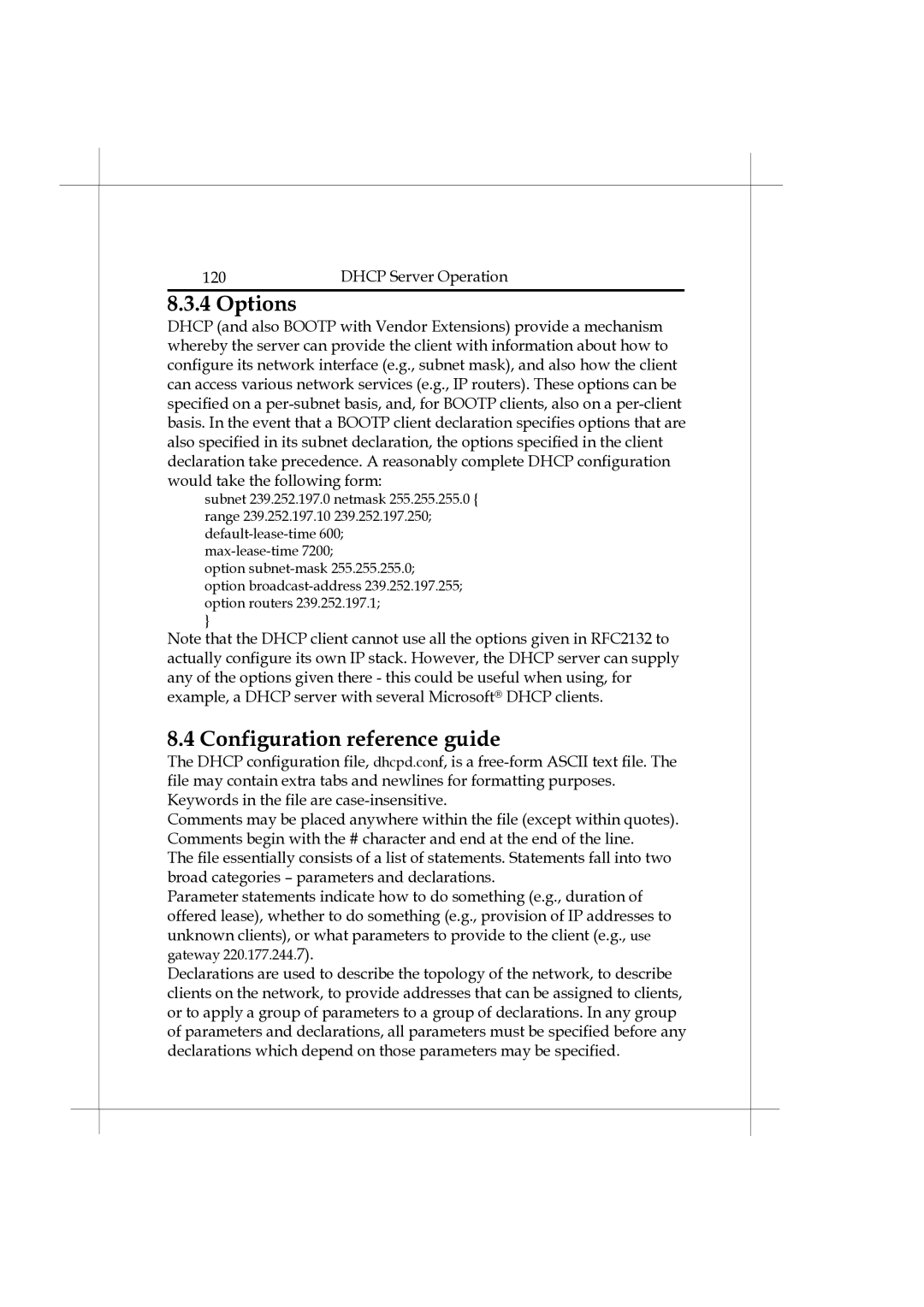
120 | DHCP Server Operation |
8.3.4 Options
DHCP (and also BOOTP with Vendor Extensions) provide a mechanism whereby the server can provide the client with information about how to configure its network interface (e.g., subnet mask), and also how the client can access various network services (e.g., IP routers). These options can be specified on a
subnet 239.252.197.0 netmask 255.255.255.0 { range 239.252.197.10 239.252.197.250;
option
}
Note that the DHCP client cannot use all the options given in RFC2132 to actually configure its own IP stack. However, the DHCP server can supply any of the options given there - this could be useful when using, for example, a DHCP server with several Microsoft® DHCP clients.
8.4 Configuration reference guide
The DHCP configuration file, dhcpd.conf, is a
Comments may be placed anywhere within the file (except within quotes). Comments begin with the # character and end at the end of the line.
The file essentially consists of a list of statements. Statements fall into two broad categories – parameters and declarations.
Parameter statements indicate how to do something (e.g., duration of offered lease), whether to do something (e.g., provision of IP addresses to unknown clients), or what parameters to provide to the client (e.g., use gateway 220.177.244.7).
Declarations are used to describe the topology of the network, to describe clients on the network, to provide addresses that can be assigned to clients, or to apply a group of parameters to a group of declarations. In any group of parameters and declarations, all parameters must be specified before any declarations which depend on those parameters may be specified.
